Wood Countertop Oil? Tung vs Mineral
I am going in 2 different directions for my Island countertop. There won't be a sink. I have read a lot about Waterlox and see that is a good direction.
However, if we decide we want to cut on it (probably a portion of it) we are also researching oil. Also, I just love the natural look of the wood. Nothing shiny. I did do a sample of Waterlox on a cutting board. It looks really nice- but I don't know if we want the "furniture look". I am aware you wouldn't cut on the WL.
SO, I've been reading about tung oil/citrus blend that DeVos Woodworking recommends. It's from Milk Paint Co. (actually 2 products I believe that you mix together. http://www.realmilkpaint.com/oil.html
Supposedly you do not have to re-oil nearly as much as with mineral. Some people say only once or twice a year vs. monthly mineral oil treatments.
I also was told by DeVos that if you have the tung oil finish and decide you want to Waterlox you can put the WL over it after a few weeks without sanding down to bare like you would do with mineral oil.
From the DeVos site:
Tung Oil/Citrus Finish (recommended for tops used as cutting surfaces)
We highly recommend the Tung Oil/Citrus finish over the mineral oil finish for tops that will be used as cutting surfaces. Pure tung oil is FDA approved and non-toxic by nature. Citrus solvent, which is 98% orange peel oil and 2% water, is added to tung oil to hasten the drying process and deepen the penetration of the oil into the wood. The oil penetrating into the wood makes the surface resistant to water and chemical damage. Surfaces treated with the Tung Oil/Citrus finish have an overall matte quality while still retaining their natural appearance.
DeVos Custom Woodworking applies four coats of the Tung Oil/Citrus finish to ensure a well-oiled finish. Another advantage of using this finish is that the finish only needs to be renewed about every six months to a year, depending on usage, as opposed to a mineral oil finish that needs monthly attention.
*Any thoughts? : )
Comments (28)
brickeyee
12 years agoBehlen Salad Bowl Finish is formulated to meet CFR21, 175.300.
The FDA establish standards, but most are aimed at commercial kitchens.
Even the cleaning chemicals must meet the FDA rules for commercial use.
Related Professionals
Little Chute Cabinets & Cabinetry · Murray Cabinets & Cabinetry · Bellwood Cabinets & Cabinetry · Laguna Niguel Carpenters · Miller Place Carpenters · Cleveland Flooring Contractors · Fairfax Flooring Contractors · Owings Mills Flooring Contractors · Oxford Flooring Contractors · Shaker Heights Flooring Contractors · Kearny Furniture & Accessories · Memphis Furniture & Accessories · Phoenix Furniture & Accessories · Owasso Furniture & Accessories · Zionsville Furniture & Accessoriesbrickeyee
12 years ago[Code of Federal Regulations]
[Title 21, Volume 3]
[Revised as of April 1, 2011]
[CITE: 21CFR175.300]
TITLE 21--FOOD AND DRUGS
CHAPTER I--FOOD AND DRUG ADMINISTRATION
DEPARTMENT OF HEALTH AND HUMAN SERVICES
SUBCHAPTER B--FOOD FOR HUMAN CONSUMPTION (CONTINUED)PART 175 -- INDIRECT FOOD ADDITIVES: ADHESIVES AND COMPONENTS OF COATINGS
Subpart C--Substances for Use as Components of Coatings
Sec. 175.300 Resinous and polymeric coatings.Resinous and polymeric coatings may be safely used as the food-contact surface of articles intended for use in producing, manufacturing, packing, processing, preparing, treating, packaging, transporting, or holding food, in accordance with the following prescribed conditions:...
Here is a link that might be useful: TITLE 21, PART 175
2LittleFishies
Original Author12 years agoCan you cut on the Salad Bowl FinisH? I'm referring to safety as well as not ruining the surface and being able to refinish with more finish as you would with oil.
I'm told tung builds up a finish... is that good for cutting? So far most are just recommending mineral oil... I don't love the way Waterlox looks. Beautiful but it looks like it's "finished" (I used 3 coats 50/50 or original/satin and 1 satin). It also gave a very slight amber color to the walnut.
If there's another protective finish that is less maintenance than mineral oil (that doesn't look so much like furniture) I'd consider using a cutting board for cutting.
I want something very matte... I was in a rush typing this. Hope I made some sense! Thanks!
2LittleFishies
Original Author12 years agoIs the Salad Bowl Finish more Matte than Satin Waterlox? Does it alter the wood color? I assume you wouldn't cut on it intentionally- even if it is food safe?
bobismyuncle
12 years agoThe Salad Bowl finishes that I'm familiar with are simply varnishes. They form films, so you would destroy the integrity of the finish if you cut on them. Water will penetrate the cuts and cause the finish to fail.
You can add wax to mineral oil to boost it. About 1 part wax (paraffin) to 6 parts oil, heated in a double boiler until the wax melts.
2LittleFishies
Original Author12 years agoA wood countertop guy in Michigan said they use Sherwin Williams lacquer on their countertops if you're not going to cut on them... What do you think?
" It is used for restaurant tables, counter tops and islands where the primary use is for service purposes and not for direct cutting. It is available in matt or what sherwin calls dull rub, semi gloss and gloss. 99% of all our blocks using a hard surface finish use the dull rub laquer. The catalyst adds hardness. It is water and stain resistant like waterlox but unlike waterlox it is hard and clear. Waterlox yellows the block. Most people who have hard surface finishes use a cutting matt or block and store it under the top or in a drawer. "
Here is a link that might be useful: SW Catalyzed Lacquer
2LittleFishies
Original Author12 years agobobsmyuncle- One more thing... Then, According to the link you posted on another discussion (below) Waterlox and Salad Bowl Finish are basically both wiping varnishes but perhaps give a different finish (matte/semi-gloss?? Both are oil/varnish blends?
I can see the marketing of all these different products is confusing.
If you get a bad scratch in any of these, are you able to sand down the one area and refinish like you would with oil?
Here is a link that might be useful: finishes
brickeyee
12 years agoAny finish that forms a film will fail in short order if cutting is done on the surface.
About the only thing you can use is mineral oil.
It then requires periodic application depending on how often and hard you use the board, and how aggressively it is washed.If you scrub the surface hard with soap the mineral oil is basically removed.
If water dos not bead up on the surface it needs more oil.Adding wax to the mineral oil makes a thicker layer, but it is still not an actual film of cured finish.
Mineral oil is available at the drugstore.
Do NOT use baby oil.
The added scent is not going to work well on food.2LittleFishies
Original Author12 years agoBrickeye- thanks for your time, but I do know all of that information. : ) It's always good to hear it again though!
My other option is NOT to cut on the board and if I decide to go that route I'm comparing various finishes. Ideally, one that is the most matte and looks like the real wood. The waterlox gave an slight amber color to my walnut board (I can compare both sides). SO, maybe the salad bowl finish or the Sherwin Williams one that one of the butcher block people uses (above).
sombreuil_mongrel
12 years agoHi,
I have used both the salad-bowl finish and the waterlox original. (as well as pure tung oil)
Waterlox original, brushed on, is quite reflective, but not as shiny as a full-gloss varnish. I'd say it's 90%; if wiped-on more like 70%. Is more forgiving of a rougher sanding job, because there is a thick finish on the wood. 240 grit will suffice.
Salad bowl finish is satin gloss, 50%. It is very thin and slow to build, the four coat recommendation should be followed. And if course if you really cut on it you will wreck it, and go right through to the wood, which can then stain through the cuts. Requires a good deal of prep, sand through 320 grit at least.
Pure tung oil dries very flat, no more than 10% reflective, demands a very well-prepped surface (sand to 400 or 600) because it does not form a surface film, it will not fill in any sanding scratches, only exacerbate them. Best application involves applying a puddle of oil, then sanding it in with 600 grit abrasive for the ultimate smoothest finish. Very effective technique for walnut, because it helps fill the pores with wood dust/oil slurry.
Casey2LittleFishies
Original Author12 years agoThanks for the info! I'd love to know your thoughts on the sherwin Williams lacquer?? Dull rub. As far as looks, wear, if it had to be reapplied, repairing scratches.
bobismyuncle
12 years agoSo many questions here
Oil finishes or oil-varnish blends do not build films well. That is why they are "in the wood" and duller finishes. Trying to build a film with an oil finish is likely to give you a soft, wrinkly and sticky surface.
Sheen
Once you build a film, you have choices on sheen. One way to get sheen is to rub with the appropriate level of abrasive. But a quicker way is to get a finish targeted to a sheen level with additives called "flattening agents" (silica). This creates microscopically small irregularities in the surface that scatter the light and make it appear less glossy.While various companies use different adjectives to describe their products' sheen, for example, high gloss, gloss, satin, eggshell, flat, dead flat, these are not industry standardized terms. I've even seen one company's two different products that have a different sheen for what they label "satin." The sheen is graded on a 0-100 scale from flat to high gloss. A finish out of the can is not likely to exceed 85 to 90 degree sheen, but you can buff to a higher gloss finish.
S-W finish
While I have used S-W finishes and I have used pre- and post-catalyzed lacquers, I don't know that I've ever used this particular one. In general, post-cat lacquers, which is what you have described is called are among the tougher finishes. But there are a couple of considerations:
- they almost always have to be sprayed. They just dry too fast to brush. If you look at the S-W Product Data Sheet, they only mention spraying.
- they have a fairly noxious odor to them. This is a consideration if you are planning to do this in your home.
- they have short pot life once you add the catalyst. So don't mix up the whole gallon if you are only going to need a quart.
- they are generally only available in gallons or larger quantities because they are a commercial product. This may be way more than you need.Color
Yes, Waterlox is a dark amber color. This can be attractive on some woods and not where you want to be on others. It would be a poor choice over a pickled or painted finish.In short, there is no perfect finish.
Each has certain characteristics such as appearance, color, sheen, enhancement of wood grain or chatoyance, protection against chemicals, protection against UV, protection against water(yes I know water is a chemical), protection against abrasion or other physical damage, dry time, odor, ease of repair, ease of application, your ability to successfully apply, maintenance requirements, cost, etc. When I teach finishing classes, I always say you pick the one or two characteristics most important to you and with that finish you get the concomitant characteristics that come with your choice.
2LittleFishies
Original Author12 years agoGreat information, bobsmyuncle!
With the Sherwin Williams, the woodworker would be spraying the island top in his workshop so I don't need to worry about fumes, pot life, or size availability.
What I DO want to know is how this type of finish wears and how it protects? Also, How it compares to a Waterlox type product (that so many love).
Would it show drink rings easily? If the wood gets scratched could it be spot repaired? I guess with that type of product it's not likely to be a DIY project for the average person though...In short, would you recommend it? Someone on the kitchen forum said this:
"I really don't understand that, 2LittleFishies. Catalyzed lacquers are generally not great for anything that's going to come into contact with water, so I'm not sure about what they're saying. If you set a damp glass on a lacquered table, it will leave a ring if it sits there long enough. It's water resistant, but it's water resistant the way a nylon windbreaker is water resistant.
So unless they're talking about something pretty different from normal catalyzed lacquers, I'd stay away. I've used other lacquers for other purposes and I can tell you they take a lot of rubbing out to get the finish really smooth. They say it's similar to a nitrocellulose lacquer in how it behaves. I'd use those for cabinets but not for a countertop, myself. I see they don't say 'countertops' in their list of applications for it."
MongoCT
12 years agoI use mineral oil on my wood counter tops, both cutting and non-cutting surfaces. No nonsense, easy to apply, easy to renew. I renew it maybe every 4-6 months. Wipe on at night, wipe down in the morning.
I've also uses mineral oil and beeswax, at a 5:1 ratio. Heat over stove (careful) then wipe on and lightly buff off. Works great, looks purdy...but straight mineral oil is fine for me.
brickeyee
12 years agoThe issue with cutting boards or a counter you plam on cutting directly on is that ANY finish that forms a film by hardening is going to be damaged by cutting.
Moisture then penetrates through the cuts in the film, spreads in the wood, and weakens the finish around the cut.
It then flakes off.Cutting boards have classically had non-film oil type finishes.
The problem is that they provide one of the lowest levels of actual protection, and require frequent 'replenishment 'to provide ANY protection.It is not very hard to 'replenish' though.
Clean and dry the surface, lightly sand or scrub it while dry, than apply another coat and let it sit a while before wiping away the excess.
Ready to use till it starts looking bad again.andersons21
12 years agoOK, if you care about the appearance of your island, as in you don't want to see stains or scratches, you should NOT EVER cut on it, or let staining foods (tomatoes, berries, beets, spinach, etc) touch it. If you have used an unfinished wood cutting board, you know how they get stained, cut, and can warp and split. The same will happen to your island top.
Mineral oil is NOT a finish; it provides nearly no protection, even when freshly applied, and disappears rapidly. It briefly darkens the wood as it soaks in, before it disappears. With my butcher block island, I probably oiled it every month to keep it looking nice (and that wasn't really enough). And I had to bleach out the stains.
A finish that cures will keep the wood looking good much longer - on the order of years rather than weeks. Any of these finishes are safe; no cured resin or varnish is more or less safe than others.
If you don't like orange/amber, you don't want Waterlox, which is made with phenolic resin. Starts out deep amber and will get even more orange with time.
Minwax Wipeon Poly is a nice pale gold color, but poly is not as easily repaired.
Real tung oil has good water resistance and pale color, but takes forever to cure. And it takes a lot of coats, with days of drying between each, to build up any protection. I would mix tung oil with alkyd varnish, which is a pale color and repairable, add some drier, and thin with mineral spirits. (As pointed out already, there is no advantage in using citrus solvent; it's just a different plant source of the same powerful, volatile type of solvent.) Then, once the finish has cured, rub out the gloss as dull as you please with sandpaper or automotive rubbing compound.
There is a recipe for this finish on Fine Woodworking (Hot-rod Varnish).
I finished a friend's cutting board with Minwax Wipeon Poly. She uses and cuts on it all the time. Of course the finish shows the cut marks -- but not quite as much as an unprotected (oiled) cutting board. The finish protects it from staining, which is what bothered her. It had pink-red stains from raspberries all over it when I got ahold of it. After several years, it has knife marks, but no stains, and the finish makes it much easier to keep clean. Even with cuts in the finish, it will warp less than a mineral-oiled board, because the finish keeps out far more water than mineral oil ever does.
hosenemesis
12 years agoI'm just a homeowner, not an expert like all of these people here on this forum, but I can share my experience. I had my pine cabinets done with a spray-on lacquer to keep the light color and avoid yellowing, which is has done well.
What it doesn't do well (on a soft wood, anyway) is last. All of the top edges and the areas around the knobs is worn off- after only a few years. I am hard on things so that should be kept in mind, but still.
I also have a lacquer on my stone floors, and that has been a catastrophe in the kitchen. It can't be touched up, and if it gets scratched it turns white. Water can get underneath it and turn it white. I would never use lacquer in a kitchen again, especially if you are tough on surfaces.
I have a built-in chopping block that is 12 years old now and all I use is mineral oil every so often. That means just taking a rag and wiping it down. I wipe again in the morning- that's it. It looks like I use it for chopping- it has knife marks in it.
As I understand it, the names of things do not tell you what they really are. I found this article to be enlightening- it tells you what is in different products.
ReneeHere is a link that might be useful: Popular Woodworking article on finishes
2LittleFishies
Original Author12 years agoThanks, Renee! So I'd love to hear more. Is your chopping block an island, or just a chopping block that use use for cutting?
Do you think using mineral oil for the island would be something I'm happy with in comparison to your experience with the lacquers?
I'm really leaning towards just doing mineral oil or oil with wax. I think if thinks get messed up I can just sand it a bit whereas with a "finish" it may get more tricky.
I looked at my Waterloxed sample again today and really just don't like the yellowy look too much.hosenemesis
12 years agoI really recommend just oiling it at first. If you don't like it, you can always seal it later. I would avoid lacquer finishes until you speak to someone who has done it and lived with it.
My chopping block is next to the stove. It's only used for food prep. None of our counters were sealed for the first two years, and since we are both usually covered in dirt (DH an archaeologist and I'm a gardener and neither of us are housekeepers) they started to look grungy. We sanded them out and put a few coats of satin polyurethane on them. They are a little yellower, but it's much easier to keep them clean now. I would never put a lacquer on a surface that was going to get any use again. If you are inclined to do that, I would get a small piece of wood, lacquer it, and put a puddle of water on it for a few hours to see how it reacts. Renee
brickeyee
12 years agoUNless you have spray equipment, you are going to need a brushing lacquer if you go that way.
If you start with a gloss lacquer you can fiish it to any sheen level you want after the fact, but if you start with any other lacquer you cannot make it a higher gloss, but can still lower the gloss.
Deft Clear Wood Finish is a brushing grade of lacquer.
You will need a high quality brush, and likely some practice since even brushing lacquer dries VERY quickly.
The first few coats can be the practice though.
I actually prefer using it under shelter outside when the temperature is on the low 40s to slow the evaporation even more.
Using it at any temperature above about 75 degrees will be a frustrating battle.
It is also painfully flammable, and the vapors are even explosive in the right concentration.
sandy808
11 years agoNot sure if you're still checking responses.....I would use tung oil, but only the one avialble from the Real Milk Paint Company.
I've come to dislike artificial wood finishes. We built a log home andd the whole interior is wood, including the floors. We used tung oil/citrus solvent on them. It's wonderful to not feel ill in this house and people comment on how they really like the natural look, and how fresh our home smells. We live hard in this house and have pets. If applied correctly (wood saturation point), the finish is easy to clean and durable, once cured. We like that it is renewable without having a nightmare stripping old stuff off.the downside is that it does take anywghere from 2-4 weeks to fully cure. With time, the finish becomes harder thereafter.
I did some kitchen/pantry shelves with this process. Once fully cured, the surface is slick to touch and water beads up.
I like the fact that pure tung oil is non toxic and my wood is natural looking with no outgassing.I will never go back to lacquers, polyurethanes, etc.
2LittleFishies
Original Author11 years agoThanks Sandy- We start our kitchen next week so no definite decisions are made but I was leaning towards the mineral oil and then see how it goes!
I am interested in the tung oil from REal Milk Paint. It seems the drying time is an issue? Does that mean we wouldn't be able to use the island for a few weeks? Do you have any photos? Thanks!
brickeyee
11 years ago"If applied correctly (wood saturation point)"
Only a very shallow portion of the wood has ANY finish present.
Once the wood pores and cells start to fill up, no more penetration occurs, just surface buildup and film forming.
If you want to see how shallow the penetration actually is, cut into the wood and look at the edges of the cut.
If you make a small cut with a sharp router bit the edges are often clean enough to see finish penetration clearly.
MrsD
9 years agoI am going to use the pure tung oil citrus mix from the Real Milk company. Sandy 808, How many coats did you end up using? This is the counter top of a china cabinet built in. I love the natural look of the walnut and I want to make sure that I use enough coats of it. I've also got a bar top in the bar area that is a walnut top and was going to use the same thing. Someone said that if it ended up not working out, you can always go over it with the waterlox. I like the natural wood look that pops with just using the tung oil and I've been told that as long as you don't let a water spill stand on it, you shouldn't have any problems. I'm ok with maintenance so applying it again every 6 months, doesn't bother me. Just curious how many coats are good for knowing the wood is sealed.
cj123
8 years agoThanks to everyone here for all the great advise!
Here's a company called Woodworker's Supply (woodworkers.com) website I found to purchase three types food-safe finishes. I also checked the John Boos Company which manufactures both residential and commercial butcher block and wood countertops and cutting boards for prices on their Mystery Oil and Boos Cream which combines mineral oil and beeswax, which is rather expensive, but the website has a lot of helpful information in their FAQ section.
GENERAL FINISHES AND BEHLEN Salad Bowl Finish are formulated to create a non-toxic, food safe finish coating. Apply to raw wood, allow 6 hours dry time before recoating, then wait 72 hours prior to use. Pint, quart or gallon cans.
Preserve™ contains a blend of oils from the meats of exotic nuts. Immediately safe upon application (made without toxic driers or solvents). 8 oz. squeeze bottle.
Clapham's Beeswax Salad Bowl Finish is made with natural beeswax with oil and is perfect for use on cutting boards, cheese boards, fruit or salad bowls, toys, utensils and more. Ready for use immediately after application. Buffs to an elegant shine once it dries. 8 oz. container.http://woodworker.com/gen-fin-salad-bowl-finish-mssu-107-279.asp
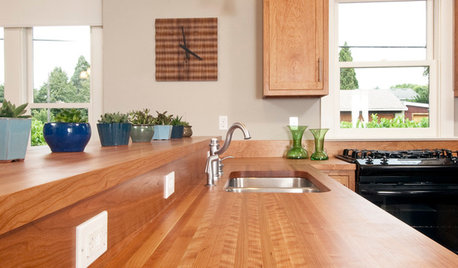
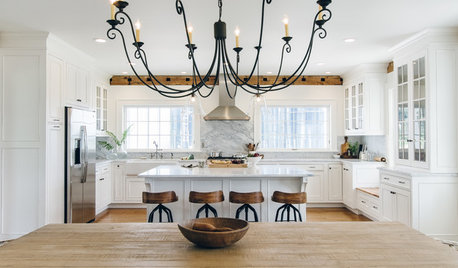
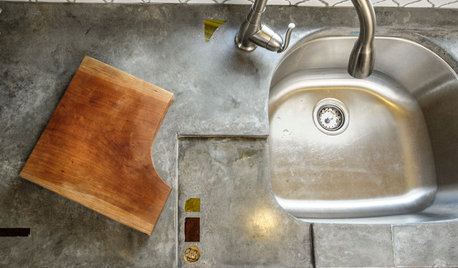
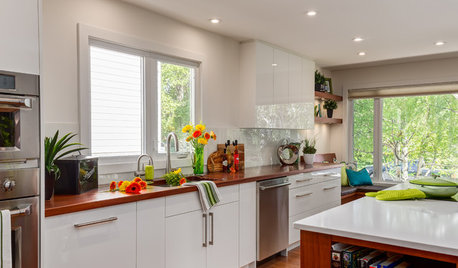
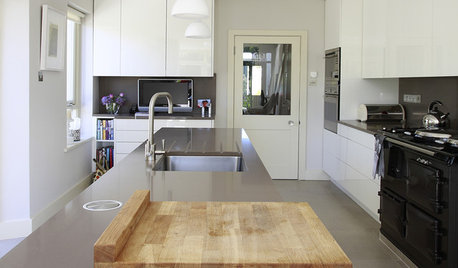
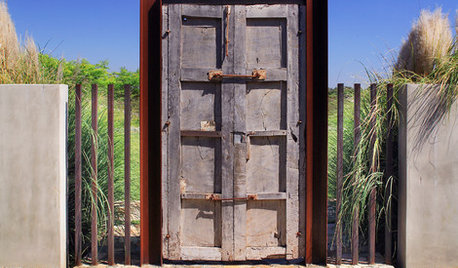
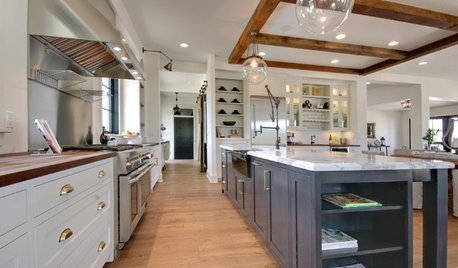
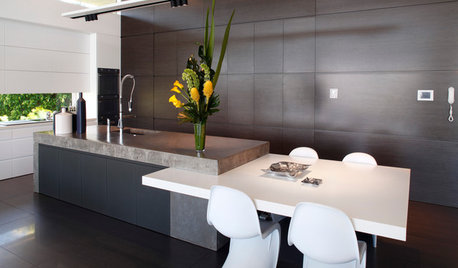
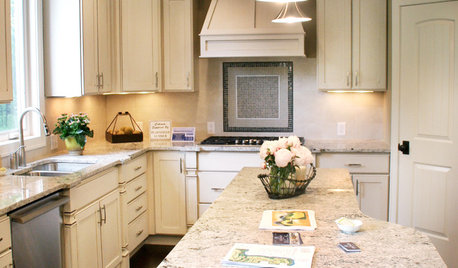






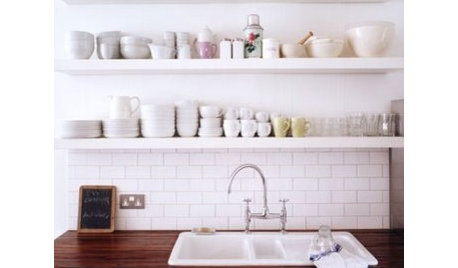



bobismyuncle